Categories: Featured Articles » Interesting electrical news
Number of views: 16945
Comments on the article: 7
5 unusual solar panels of the future
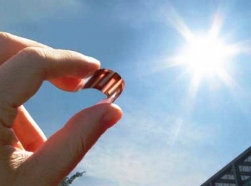 Today silicon solar panels - far from the finale on the path to curbing the energy of sunlight and its conversion into useful electrical energy. Many works are still being carried out by scientists, and in this article we will consider five unusual solutions that some of the modern researchers are developing.
Today silicon solar panels - far from the finale on the path to curbing the energy of sunlight and its conversion into useful electrical energy. Many works are still being carried out by scientists, and in this article we will consider five unusual solutions that some of the modern researchers are developing.
The American National Renewable Energy Laboratory (NREL) is built a solar battery based on semiconductor crystals, the sizes of which do not exceed several nanometers, these are the so-called quantum dots. The sample is already a champion in terms of external and internal quantum efficiency, which amounted to 114% and 130%, respectively.
These characteristics show the ratio of the number of generated electron-hole pairs to the number of photons incident on the sample (external quantum efficiency) and the ratio of the number of generated electrons to the number of absorbed photons (internal quantum efficiency) for a certain frequency.
The external quantum efficiency is less than the internal, since not all absorbed photons participate in the generation, and some of the photons incident on the panel are simply reflected.
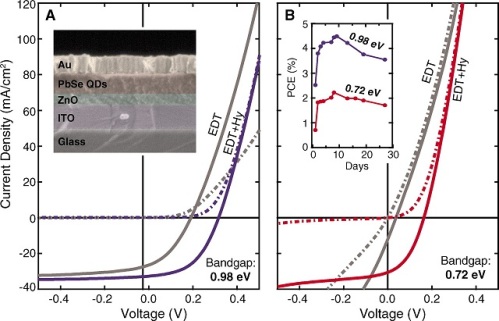
The sample consists of the following parts: a glass in an antireflection coating, a layer of a transparent conductor, then nanostructured layers of zinc oxide and quantum dots of lead selenide, then ethanedithiol and hydrazine, and a thin layer of gold as the upper electrode.
The total efficiency of such a cell is about 4.5%, but this is enough for the experimentally obtained rather high quantum efficiency of this combination of materials, which means optimization and improvement are ahead.
Not a single solar cell has shown an external quantum efficiency above 100%, while the uniqueness of this NREL development lies in the fact that each photon that falls on the battery creates more than one electron-hole pair at the output.
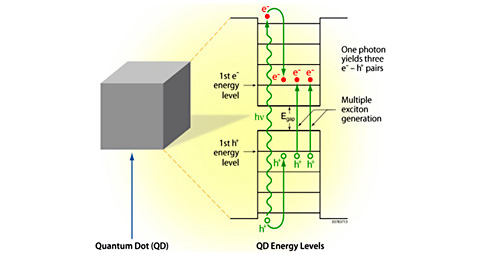
The reason for the success was the multiple generation of excitons (MEG), an effect that was first used to create a full-fledged solar battery capable of generating electricity. The intensity of the effect is associated with the parameters of the material, with the band gap in the semiconductor, as well as with the energy of the incident photon.
The size of the crystal is crucial, since it is within a tiny volume that quantum dots limit charge carriers and can collect excess energy, otherwise this energy would simply be lost in the form of heat.
The laboratory believes that the elements based on the MEG effect are very worthy candidates for the title of a new generation of solar panels.
Another unusual approach to creating solar cells was suggested by Prashant Kamat of the University of Notre Dame. His group developed a dye based on quantum dots of titanium dioxide coated with cadmium sulfide and cadmium selenide in the form of a water-alcohol mixture.
The paste was applied to a glass plate with a conductive layer, then fired, and the result was photovoltaic battery. A substrate converted into a photovoltaic panel only needs an electrode on top, and it is possible to obtain an electric current by placing it in the sun.
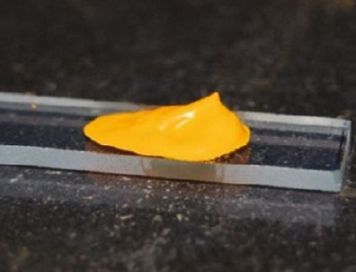
Scientists believe that in the future it will be possible to create paint for cars and for houses, and thus turn, say, the roof of a house, or the car body, painted with this special paint, into solar panels. This is the main goal of researchers.
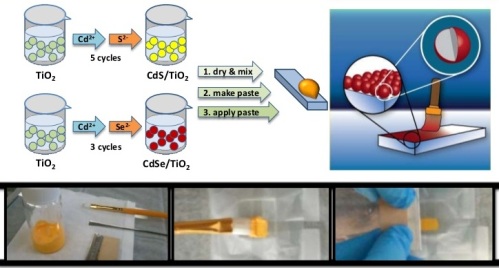
Although the efficiency is not high, only 1%, which is 15 times less than conventional silicon panels, solar paint can be produced in large volumes, and very inexpensively.Thus, energy needs in the future can be satisfied, say chemists from the Kamat group, who call their offspring "Sun-Believable", which translates as "solar-probable."
Next unusual solar energy conversion method offer at the Massachusetts Institute of Technology. Andreas Mershin and colleagues created experimental batteries based on a complex of biological molecules capable of "collecting" light.
The PS-1 photosystem, borrowed from the cyanobacterium Thermosynechococcus elongatus, was proposed by molecular biologist Shuguan Zhang and several of his like-minded people 8 years before the start of current experiments, Andreas Mershin.
The efficiency of the systems turned out to be only about 0.1%, but this is already an important step on the road to mass introduction into everyday life, because the costs of creating such devices are extremely low, and in general biological owners can create their own batteries using a set of chemicals and a stack of freshly cut grass . Meanwhile, a number of improvements will increase the efficiency to 1-2%, i.e. to a commercially viable level.

Previously similar cells with photosystems could only operate reasonably under laser light concentrated strictly on the cell, and then only in a narrow wavelength range. In addition, expensive chemicals and laboratory conditions were needed.
Another problem was that the molecular complexes extracted from plants could not exist for long. Now, the institute team has developed a set of surface-active peptides that envelop the system and retain it for a long time.
By increasing the efficiency of light collection, the team at the Massachusetts Institute of Technology solved the problem of protecting photosystems from ultraviolet radiation, which previously damaged the photosystem.
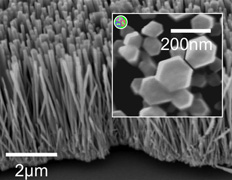
PS-1 was now sown not on a smooth substrate, but on a surface with a very large effective area, these were 3.8 μm thick titanium dioxide tubes with pores of 60 nm, and dense zinc oxide rods several micrometers high and several hundred nanometers in diameter .
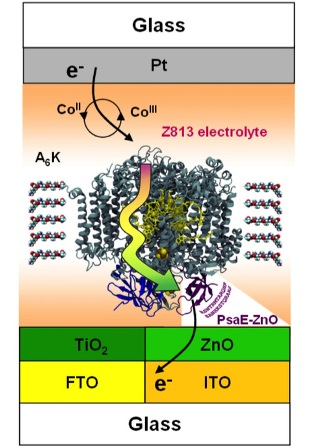
These variants of the photoanode made it possible to increase the number of chlorophyll molecules under light, and protected the PS-1 complexes from ultraviolet rays, since both materials absorb them well. In addition, titanium tubes and zinc rods also play the role of a framework and act as electron carriers, while the PS-1 collects light, assimilates it, and separates the charges, as happens in living cells.
A cell exposed to the sun gave a voltage of 0.5 volts with a specific power of 81 microW per square centimeter and a photocurrent density of 362 μA per square centimeter, which is 10 times higher than any other biovoltaic system known previously based on natural photosystems.
Now let's talk about organic polymer based solar cells. If they establish mass production, they will be much cheaper than silicon competitors, despite the fact that they have already achieved an efficiency of 10.9%. Tandem Polymer Solar Battery, created by a team of scientists from the University of California, Los Angeles (UCLA), has several layers, each of which works with its own part of the spectrum.
A successful combination of different substances that do not interfere with each other when working together is the most important point. For this reason, the authors specially developed conjugated polymers with a low band gap.
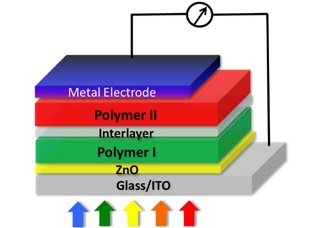
In 2011, scientists managed to get such a single-layer polymer cell with an efficiency of 6%, while the tandem cell showed an efficiency of 8.62%. Working further, the researchers set out to expand the range of the working spectrum in the infrared region, and they had to add the polymer of the Japanese company Sumitomo Chemical, thanks to which they managed to achieve an efficiency of 10.9%.
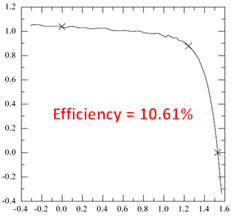
This most successful design consists of a front cell made of a material with a large band gap, and a back cell with a narrow band gap.The authors of the development argue that the creation of such a converter, including the cost of materials, is not very expensive, moreover, the technology itself is compatible with thin-film solar panels manufactured today.
It seems that in the next few years, solar cells based on organic polymers will become commercially viable, because the developers plan to increase their efficiency to 15%, that is, to the level of silicon.
Rounding out the review super thin solar panels with a thickness of 1.9 micronswhich is 10 times thinner than any other thin-film batteries created earlier. Together, Japanese and Austrian scientists created a thin organic unusually flexible solar panel. At the demonstration, the product was wrapped around a human hair with a diameter of 70 μm.

Traditional materials were used to make the battery, but the substrate was made of 1.4 microns thick polyethylene terephthalate. With an efficiency of 4.2%, the specific power of the new solar battery was 10 watts per gram, which is generally 1000 times higher than the corresponding indicator for multicrystalline silicon batteries.
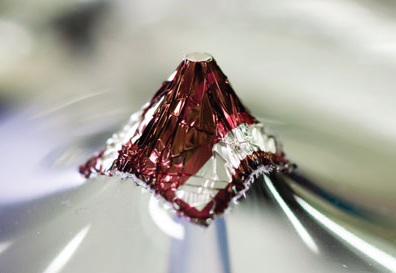
In this regard, it seems promising the development of areas such as “smart textiles” and “smart skin”, where, in addition to solar panels, electronic microcircuits created using similar technology may be equally thin and flexible.
See also:5 unusual designs of wind generators
See also at bgv.electricianexp.com
:
